Thermoregulation Model JOS Function
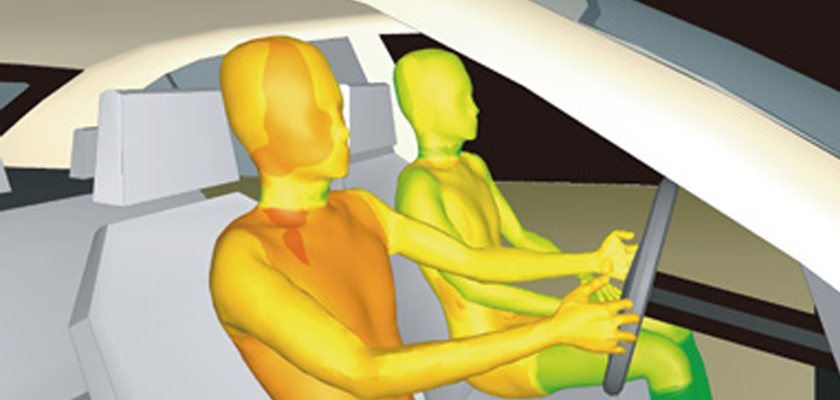
Takao Itami (Software Cradle, Software Engineering Dept.)
Thermoregulation Model JOS Function
Software Cradle's SC/Tetra thermo-fluid analysis software includes the JOS function which is used to simulate and analyze human body skin surface temperature and quantity of perspiration. SC/Tetra divides a model of the human body into 17 segments and simulates the morphological and physiological characteristics and thermoregulation function of each segment by solving heat balance equations. "The comfort of human beings will vary depending on the environment. SC/Tetra can be used to analyze the human response which will help engineers design better products," says Mr. Itami, the developer of the JOS and a member of the Software Cradle Co., Ltd staffs. In this article, Mr. Itami tells the story behind the development of the JOS function in SC/Tetra. 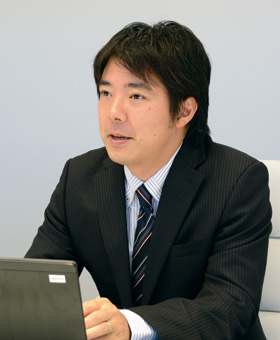 Takao Itami, Software Cradle, Co., Ltd., Tokyo Branch, Software Engineering Dept.
Takao Itami, Software Cradle, Co., Ltd., Tokyo Branch, Software Engineering Dept.
What Caused you to Focus on the Growing Need to Simulate Human Thermal Comfort?
SC/Tetra thermal-fluid analysis software is used in a variety of fields including automotive, electronic, and mechanical fields. Many of our customers face a similar challenge when developing products - energy savings. Today, energy issues such as global warming and nuclear power generation are increasingly recognized as key global challenges. Hence, energy-savings is becoming more and more important for all products.
For example, consider electric vehicles. Recent test results show that the overall efficiency of an electric vehicle is affected more by air conditioner settings than a comparable gasoline powered vehicle. Improving air-conditioning efficiency is seen as a key enabler for improving vehicle total energy efficiency. Hence, developing more efficient vehicle air conditioning systems has become a high priority. Of course, improving passenger comfort is also an important objective. Hence, vehicles are not just a means of transportation, but are also expected to satisfy additional values.
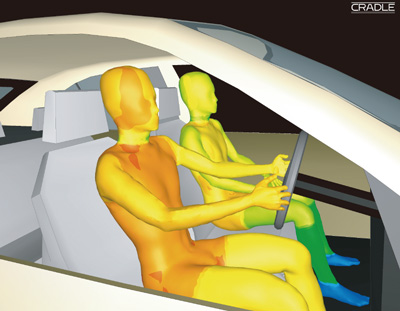 Figure 1: Analysis of SC/Tetra coupled with JOS function to predict
Figure 1: Analysis of SC/Tetra coupled with JOS function to predict
the temperature changes of the passengers in a vehicle
Considering this situation, we believed that having the ability to analyze human thermal comfort would be useful for our customers. We asked the question, could we develop a function that enables the analyst to simulate human senses using thermal-fluid analyses? In the past, comfort indices such as PMV and SET have been used to represent human senses in thermal-fluid analyses. However, these indices have limitations: human subjects must be exposed to a uniform environment, and only the comfort of the entire body can be analyzed. Because of these limitations, the indices have been only used for assessing comfort in buildings and were unsuitable for analysis in the non-uniform temperature and flow environment inside a car.
When it comes to computationally simulating the human body, one analysis method considers the human body as a heat source and allocates an amount of heat generation in the space occupied by the body. However, we cannot measure human comfort using this method. Another approach is the thermoregulation model, which can be used to simulate human senses. The thermoregulation model treats temperature and humidity of the environment as boundary conditions and solves the heat balance equations to estimate the temperature of each body segment. By coupling the thermoregulation model with the thermal-fluid conditions in the environment, human body temperature and the amount of perspiration can be calculated in complex environments such as a vehicle interior. We expected this capability would be useful for engineers and designers in a variety of fields. Moreover, we felt the addition of the JOS function would enhance the value of SC/Tetra.
There are several different kinds of thermoregulation models. We adopted the Joint System Thermoregulation Model (JOS), developed by Professor Shin-ichi Tanabe at Waseda University, which simulates the human body blood circulation system in great detail and includes correction algorithms to account for physiological differences caused by age, gender, and body size.
We thought these characteristics of the JOS model would be suitable for coupling with the thermal fluid analysis CFD software. An improved version of JOS, JOS-2 is included in SC/Tetra V10, which accounts for muscle and fat layers in the head segment.
What were Some of the Challenges during Development, and were Any Innovative Solution Produced?
The most challenging difficulty was the development of the information exchange process between the JOS model and the fluid calculations. The JOS model simulates heat transfer with the environment. Initially it was unclear to us how to define the environment using the data within SC/Tetra.
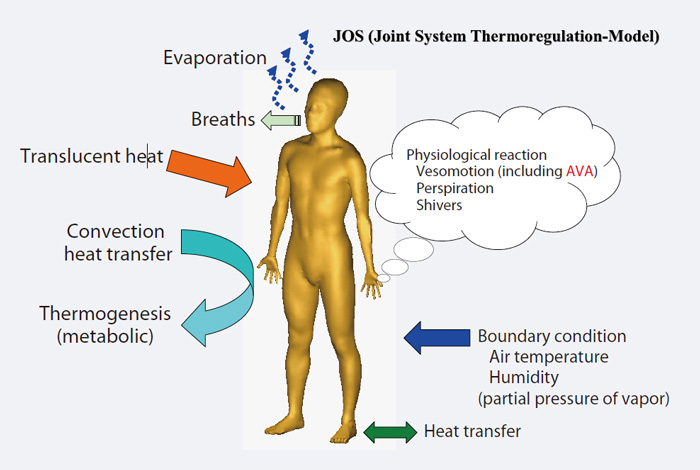 Figure 2: Factors accounted in the JOS model
Figure 2: Factors accounted in the JOS model
Another challenge we faced was deciding how to obtain human body shape data for our customers. We wanted to offer predefined samples. However, due to copyright law, we could not offer shape data created with commercially available software as sample data in SC/Tetra. By courtesy of Professor Tanabe's laboratory, we collected 3D measurement data of the students in the laboratory completely free from copyright. However, because the data was obtained by actual measurements, we had to modify the data for use as analysis data. This could be tedious work. However, SC/Tetra's strong meshing capabilities and wrapping function facilitated the definition of human body shapes for the analysis samples.
Clothing condition is one aspect that I worked on to make it more user-friendly. In JOS, the Clo value of each body segment represents the condition of the clothing. However, inputting values for 17 body segments can be tedious. To solve this problem we measured Clo for various types of clothing such as a suit or working clothes. Then we created prepared parameter sets that enables the user to only have to choose the type of clothing. Once this selection is made, the Clo values are automatically assigned to the 17 segments.
How Did User Feedback Affect Development of the JOS Model?
Professor Tanabe, the developer of the JOS model, helped and supported us. His laboratory uses SC/Tetra, so that was also a tremendous benefit. He gave us valuable input about selecting JOS conditions and how to input clothing conditions. Our relationship with the laboratory is very special. The laboratory developed the JOS model but was also an SC/Tetra user. In addition, Professor Shiraishi at the University of Kitakyusyu requested a calculation function for skin temperature. At that time, the JOS model calculated body temperature for each of the 17 segments. But Professor Shiraishi proposed calculating the skin temperature separate from the body temperature. He felt this was necessary to accurately calculate a condition such as the skin face temperature when the air conditioned air is blowing on it. Consequently, we improved the JOS function so it calculates the skin temperature at each mesh point in the body segment.
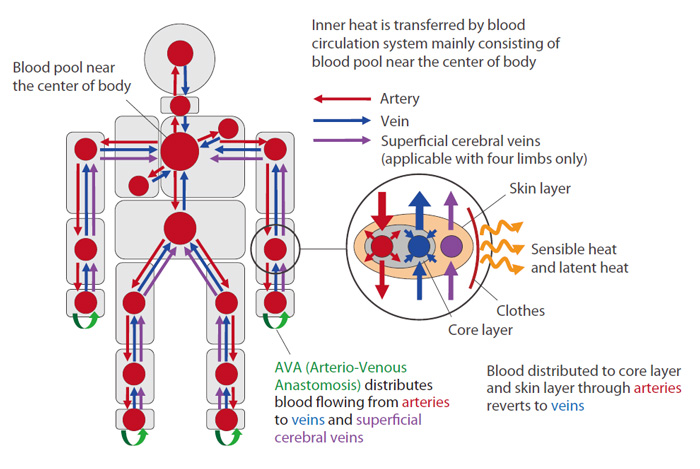 Figure 3: Heat transfer in the human body using JOS model
Figure 3: Heat transfer in the human body using JOS model
Why Did you Adopt a Pull-down Menu GUI?
The JOS inputs are a set of parameters (age, sex, body fat rate, and clothing) and geometry. These parameters use input boxes and buttons to define their respective values. For geometry, especially body segment information, we wondered which input approach would be the most user-friendly. Initially we used a method where the user selected regions from a list of region names and defined the position of each region. However, the developers of our SC/Tetra preprocessor suggested using a pull-down menu. While this method is not as easy to use as we would like, we adopted it because the resultant GUI was simple and clear.
What are the Best Features of SC/Tetra JOS?
The SC/Tetra JOS function has four human body postures. The user can start an analysis using predefined human body shape data. Four different clothes conditions are available courtesy of actual measurements from Professor Tanabe. JOS is a user-friendly for engineers, designers, and developers.
Please Describe How the JOS Function is a Used in SC/Tetra
The JOS function requires setting physiological parameters such as age, sex, and body fat rate, clothes conditions, body surface area (indicating body size), and position information of body segments (head and neck). The body surface area is automatically determined from the selected human body shape. Hence, the user does not need to provide any surface area information. All the other input parameters can be set in one dialog.
To use the JOS function, the user prepares the human body analysis model as previously described. Then the environmental conditions (humidity, air flow, and temperature) are set. When a new human body condition is created in the JOS dialog, the surface of the human body is treated as a static wall. This means that wall conditions do not need to be specified. If radiation is a factor, the emissivity of the human skin must be defined.
When the calculations are complete, skin temperature and skin wittedness are output to the SC/Tetra FLD file. Skin wittedness is an index that indicates level of perspiration. The SC/Tetra calculation log le contains other pertinent information such as core and temperature of the blood pool, which are thermoregulation parameters. This information can be viewed as text or visualized through the SC/Tetra's postprocessor.
Do you Have Any Special Advice to Give to JOS Function Users?
The JOS function assumes water vapor generated by sweating evaporates completely. Therefore the function is not suitable for analyzing a person who is soaked in sweat. In addition, excessively high temperature and high humidity environments, such as that found in a sauna, should be avoided. The human body is greatly affected by upward flow generated by the body temperature. Buoyancy should be considered in the analysis unless other strong convective forces are present, e.g. extremely strong winds.
The entire surface of the human body being simulated must be contained within the SC/Tetra's computational domain to properly interface with the surrounding environment. If a part of the body surface contacts the boundaries of the computation domain, the conditions at that point cannot be calculated. In addition, sensible or latent heat through a body surface cannot be calculated. Therefore, when analyzing a human body standing on a floor, a solid mesh must be generated inside the floor.
Closing Remarks
The JOS function in SC/Tetra enables simulation of human body temperature and amount of perspiration for a given environment. Model set-up is easily achieved using predefined human body shape data. Being able to assess human body thermal comfort using computational simulation, especially with the easy set-up found in SC/Tetra JOS, provides substantial benefits compared to obtaining this same information experimentally. A thermal mannequin costs more than 10 million yen (over $100,000 USD). Experiments using several thermal mannequins (e.g. many passengers in a tour bus) will be unrealistically expensive. In contrast, the SC/Tetra JOS function can perform this calculation routinely with any number of passengers. The next step is to calculate a true comfort index from the body temperature and perspiration outputs currently generated. We appreciate any comments and requests from our customers.
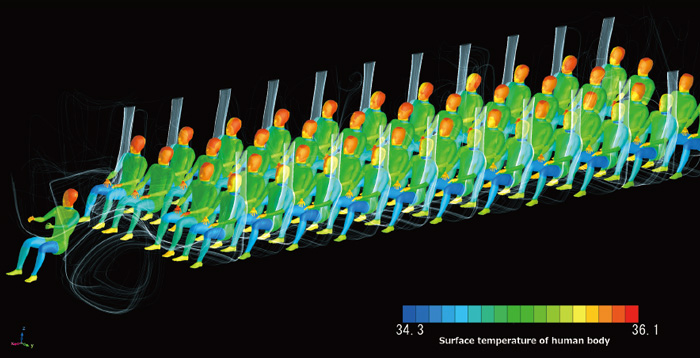
Figure 4: Thermal environment analysis of a coach showing the contour of human body surface
*All product and service names mentioned are registered trademarks or trademarks of their respective companies.
*Contents and specifications of products are as of November 28, 2013 and subject to change without notice. We shall not be held liable for any errors in figures and pictures, or any typographical errors.
Download


